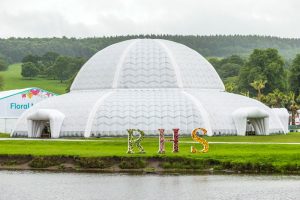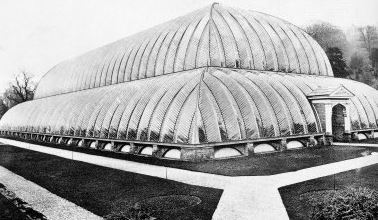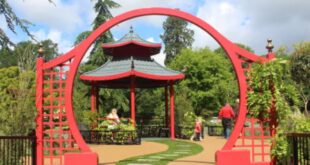Joseph Paxton was appointed head gardener at Chatsworth Park in 1823, when aged only 20. Then as now, Chatsworth was one of the nations finest gardens. Paxton set about redesigning parts of the garden, a lasting legacy being the famous Emperor Fountain. Sadly his second masterpiece at the garden, the Stove House is no longer with us.
The Great Conservatory or Stove House
Paxton, as well as highly capable gardener was a brilliant engineer. At Chatsworth his interest in using greenhouses grew, by using his engineering talent he set about improving their effectiveness and construction. His approach was to use standard components, saving both cost and construction time. He even managed to persuade his glass supplier to produce larger panes.
The result was The Great Stove, nearly 230 feet long and nearly 70 feet high, when built the largest glass building in the world. It was heated by eight boilers. Queen Victoria was driven through it in her coach.
Sadly, due to rising maintenance costs it fell into disrepair and was demolished in 1920. For the newest show in the RHS calendar at Chatsworth, a temporary structure representing the original was erected.

The Palm House at Kew, built a few years later, gives a good impression of what it would have looked like.
The Crystal Palace
Joseph Paxtons Stove House was the prototype for his most famous building, The Crystal Palace. Using the same innovative modular construction principles, this giant structure took only eight months to create. It was dismantled and moved from Hyde Park to Sydenham (Crystal Palace). Sadly this building is also no longer with us.
 Gardeners Club The Gardeners Club is a free to join online club for everyone with an interest in gardening and gardens.
Gardeners Club The Gardeners Club is a free to join online club for everyone with an interest in gardening and gardens.






